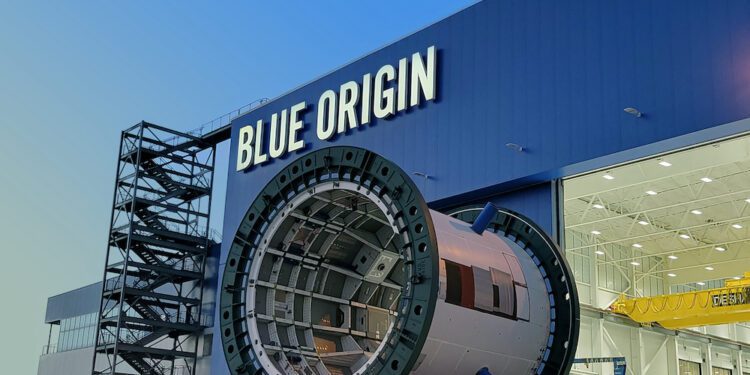NASA has chosen Blue Origin, owned by Jeff Bezos, to construct the landing system for the Artemis V Moon mission, marking a significant development in space exploration.
Scheduled for launch in September 2029, Artemis V will transport a crew to the lunar surface. Although the specific vehicle was not mentioned, Blue Origin is already working on a lander called Blue Moon. Notable companies such as Boeing, Lockheed Martin, and Draper are also involved in this NASA initiative. The contract awarded to Blue Origin is valued at $3.4 billion, and the company announced that its own contribution exceeds this amount.
During the mission, an Orion capsule will carry four astronauts to the Moon. Once there, two of the crew members will utilize a Blue Origin lander attached to the Gateway space station to make a touchdown at the lunar south pole. They will spend a week conducting various activities, including moonwalks, rover operations, and scientific experiments. Meanwhile, the other astronauts will focus on expanding and maintaining the Gateway.
It is worth noting that NASA had already selected SpaceX’s Starship for the first (Artemis III) and second (Artemis IV) human landings. In an effort to provide a backup and promote competition, the agency called for proposals for a second lander, to which Blue Origin responded in December of last year. Blue Origin disputed SpaceX’s win and filed a lawsuit against NASA, claiming that safety concerns were disregarded in the contract award. However, the claims were dismissed by a federal court.
This decision marks a significant achievement for Blue Origin, as it has been striving to secure a crewed lunar mission. While the company already holds a NASA contract for a Mars science mission and financial support for the Orbital Reef space station, a lunar voyage has remained elusive until now. Additionally, this selection underscores NASA’s growing dependence on privately developed technology for missions beyond Earth’s orbit, exemplified by partnerships like Axiom Space’s Artemis suits. It is clear that public-private collaborations will play a defining role in American space exploration for the foreseeable future.


![Best Metal Gaming Laptops [year] 2 2024 Best metal body laptops on Amazon](https://techtout.com/wp-content/uploads/2023/05/best-metal-gaming-laptops-75x75.jpg)


![How to enable dark mode on Instagram [year] 5 2024 Instagram dark mode guide](https://techtout.com/wp-content/uploads/2023/01/dark-mode-instagram-120x86.jpg)
![Best Metal Gaming Laptops [year] 6 2024 Best metal body laptops on Amazon](https://techtout.com/wp-content/uploads/2023/05/best-metal-gaming-laptops-120x86.jpg)
![25 popular Linux distros [year] 7 2024 Most popular Linux distros in 2023](https://techtout.com/wp-content/uploads/2023/08/popular-linux-distros-120x86.jpg)
![Instagram story decoration Ideas in [year] 8 2024 A photo of a person using Instagram on iPhone, showing Instagram stories decorations](https://techtout.com/wp-content/uploads/2023/02/decorate-instagram-stories-120x86.jpg)
![10 Best Browsers for iPhone in [year] 9 2024 Best iPhones browsers](https://techtout.com/wp-content/uploads/2023/05/best-iphone-browsers-120x86.jpg)
![Top 9 lifestyle apps that will improve the quality of your life in [year] 10 2024 Lifestyle apps for IOs and Android users](https://techtout.com/wp-content/uploads/2023/07/top-lifestyle-app-120x86.jpg)


![11 Latest Instagram Tips and Tricks [year] 14 2024 high angle photo of a mobile](https://techtout.com/wp-content/uploads/2020/08/instagram-profile-scaled-1-120x86.jpg)








